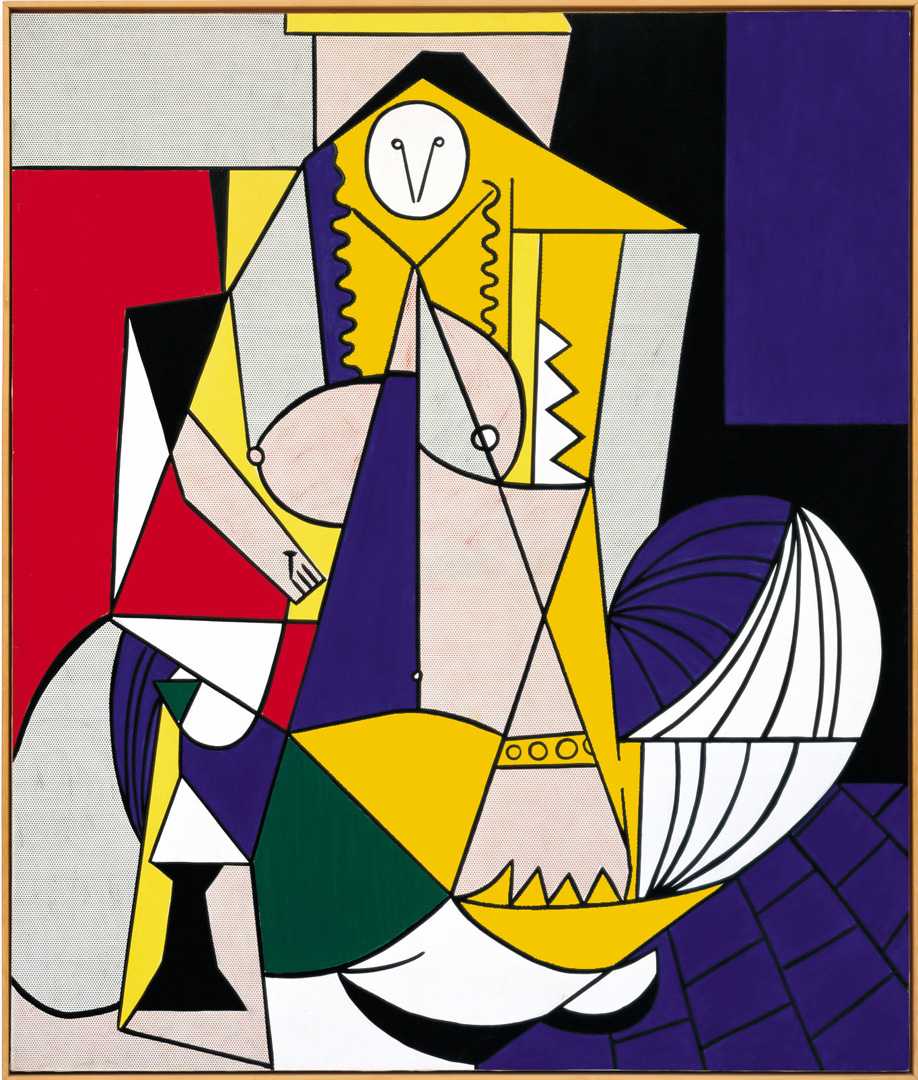
Femme d'Alger
© Estate of Roy Lichtenstein
NARRATOR
In 1963, Roy Lichtenstein said that he wanted to make art so despicable that no one would want it.
Jeff Koons.
JEFF KOONS
I always enjoy what Roy brought to Pop art. A very graphic look, a very accessible and very emotional look at Pop.
NARRATOR
Jeff Koons also collects Lichtenstein’s work
JEFF KOONS
Roy was able to show to the public the relationship that artists have with each other.
NARRATOR
Like Lichtenstein’s relationship to Picasso. He was a great admirer, and this painting reprises a well-known Picasso work from 1955 with the same title, Femme d’Alger.
NARRATOR
And Picasso, borrowed the theme from Eugene Delacroix—his 1834 painting The Women of Algiers in their Apartment, which was a polite way of saying, women in a brothel. Lichtenstein’s version does not attempt to convey Delacroix or Picasso’s lasciviousness.
JEFF KOONS
If you look back through history, artists are always referencing each other, because they're referencing things that they love in the world. And we do it every day.
NARRATOR
As Roy Lichtenstein said in a 1962 interview:
ROY LICHTENSTEIN ARCHIVAL AUDIO
I don't mean to parody the Picasso. But I think I'm using commercial methods so that, in a way, it looks like a cheap reproduction of a Picasso. This is a stylistic thing I like to happen.
At the same time as he was borrowing images from comic strips and commercials, Roy Lichtenstein was also borrowing from his heroes. The process of borrowing, updating, and (hopefully) outdoing has always been a strong tradition in art. Pablo Picasso borrowed from everyone, including the theme from Eugène Delacroix’s 1834 painting Women of Algiers in Their Apartment, which Lichtenstein appropriates along with a grid of primary colors à la Piet Mondrian. The women in Delacroix’s painting represent a male fantasy: a harem of women lounging around, waiting. Picasso, in his series from the mid-1950s, further scandalizes the theme. Here, however, Lichtenstein turns the salaciousness in on itself. The woman is a series of fragmented parts, jagged and angular; she is one with the architecture of her space, her birdlike face repels the gaze rather than returns it.
Roy Lichtenstein is one of the founders of American Pop art. He was born in New York, the son of a real estate agent and homemaker, and was part of a generation whose young adulthood experiences were defined by World War II. He studied with artist Reginald Marsh at the Art Students League and went on to attend and make art at Ohio State University. His academic life at OSU was interrupted by the war and service in the infantry. His early work was highly interested in American mythologies and frequently referred to images of early American history taken from genre painting.
Lichtenstein’s painting changed radically in the early 1960s. He began to use imagery found in advertising and comic books; sources that would have been considered outside of art’s usual subject matter and formal concerns. Over the course of decades, however, Lichtenstein’s innovations came to symbolize art’s collision with popular culture, a collision that continues to develop today. From comic exaggerations of advertising to images of war, cartoon icons to consumer goods, anything and everything printed and distributed in American culture was a potential subject for Lichtenstein’s painting.
While the subject matter of Lichtenstein’s work often takes center stage, his engagement with the conventions of printing and advertising, and how those conventions affect vision, was of central importance to his studio practice. Benday dots, hatch marks, blocked coloring and shadows, and the delineation of forms with simple black lines became part of Lichtenstein’s toolbox. These strategies of mechanized visual shorthand were employed to reexamine art history through the lens of contemporary life.
In five thousand paintings, prints, drawings, sculptures, murals, and other objects, Lichtenstein systematically studied and experimented with many of the concerns, philosophies, and genres of art. He was particularly interested in how painting represents the world, and how various art movements, like impressionism, cubism, and expressionism, put forth different claims about what that representation was capable of achieving. Lichtenstein reproduces, exaggerates, puns, parodies, satirizes, and, most importantly, tests these theories and approaches in a body of work that has become foundational to any understanding of post-war American art.